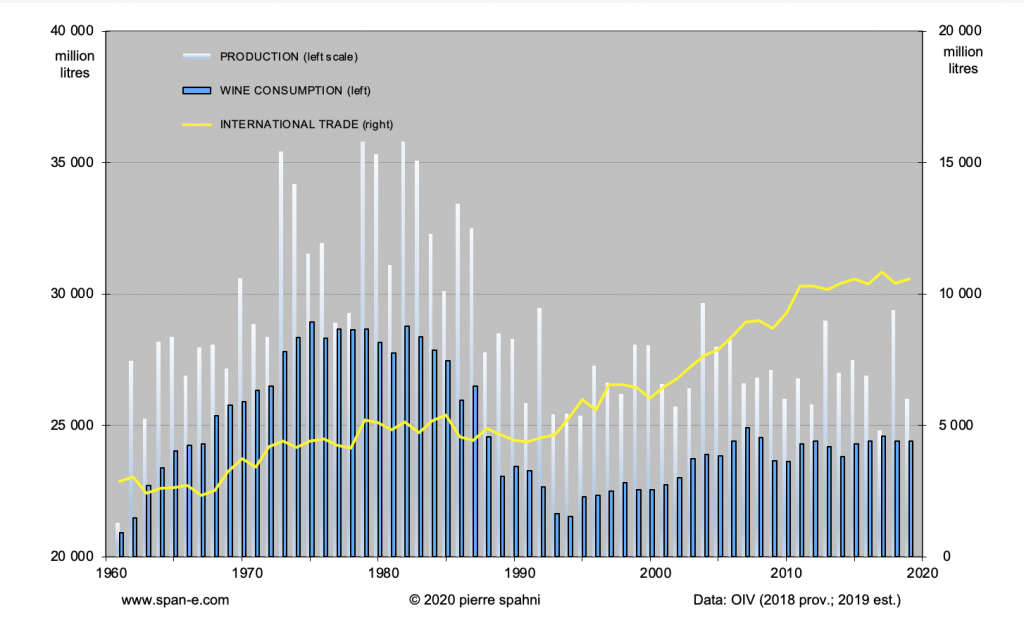FREE THOUGHT
Market intervention is coming back into fashion. It was a big economic and political issue since the turbulent 1930s. The policy of stabilising wine prices and regulating trade was adopted by Switzerland and by France who later extended it to its European partners. It was the topic of my first books – on the Swiss market (Le marché des vins en Suisse) in 1978 and The Common Wine Policy and Price Stabilisation ten years later.
The EU’s wine policy was fundamentally flawed at the time: price stabilisation having degenerated into price support, this kept pushing down quality, consumption and ultimately prices, in a perverse effect. Ever-growing surpluses were produced and partly dumped onto the international scene, where the EU was a dominant player.
But stabilising wine prices was still a good idea politically. So why not achieve this by creating futures contracts that would enable to transfer risk from producers and consumers who usually loathe it to speculators who love it? The main difficulty laid in the differentiated nature of the underlying products, whose prices at times could be seen to behave quite diversely depending on the wines’ other characteristics (attributes).
A 1992 round-up of the global market (Le Vin, penned with one of my former mentors, Walter Labys) showed that amidst all the gloom caused by falling consumption and rising surpluses there was still a glimmering light: trade.
Volumes have roughly doubled since the release of the first edition of The International Wine Trade in 1995 (see chart below). That material was updated here in articles like O-N-E World (2005), Opening up Markets and Minds (2007), and in the note On Global Wine Market Trends (2011). It looks as if the same dynamics are still at play today and that trade keeps drifting ever further away from its Mediterranean cradle to the Pacific basin.
My latest book, Maggie Chardonnay (2016), explores the basics of neuromarketing in wine. Prices are taken by shoppers around the globe as a rough proxy for quality. Marketers see them as a critical attribute of a product they want people to notice and buy – as part of the toolkit they use to differentiate an individual wine from its many rivals.
Canny differentiation keeps competitors at bay. Clever positioning of the wines, away from the pack where substitution is relatively easy and competition is rife, remains the best way for producers to insulate themselves from market turbulence.
September 1st, 2020
***

Global Wine Production, Consumption and Trade 1960-2020
***